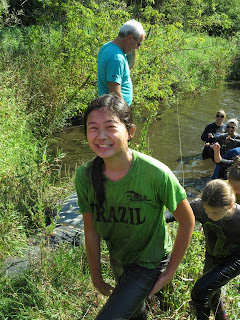The First Great Lesson is the most memorable and is often done
on the very first day of school. It involves the use of a balloon and gold
stars to tell the story of the beginning of the universe. This lesson also
includes some demonstrations using solids and liquids to show how the
continents and oceans first came together.
This lesson leads to the study of:
·
Astronomy: solar system, stars, galaxies, comets, constellations
·
Meteorology: wind, currents, weather, fronts, erosion, water
cycle, clouds, glaciers
·
Chemistry: states of matter, changes, mixtures, reactions,
elements, atoms, periodic table, compounds, molecules, chemical formulas,
equations, lab work, experimentation
·
Physics: magnetism, electricity, gravity, energy, light, sound,
heat, friction, motion, experimentation
·
Geology: types of rocks, minerals, land forms, volcanoes,
earthquakes, plate tectonics, ice ages, eras of the earth
·
Geography: maps, globes, latitude/longitude, climates, land/water
form names, continent and country research
Maria Montessori was devoutly religious, and brought many of her
beliefs into the Great Lessons. These lessons came about back when religious
beliefs were an accepted, natural part of everyday life (including schools).
Things are different today, and if you are teaching at a school, you'll
probably want to stick to a factual account of the beginning of the universe
(see the end of this post for some resources); if you're at home, you can feel
free to tailor the lesson to your own family's religious beliefs. The story is
inspirational to children no matter which version they hear. (See
photo: origins of the universe)






























